… from the Wychwoods Albums Archive
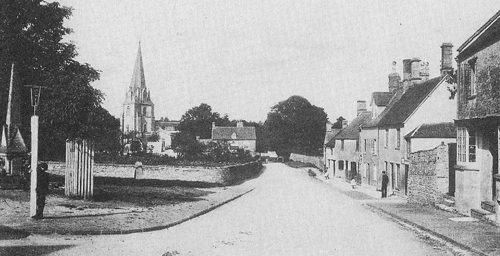
Although looking like today, Church Street is no longer the commercial area it used to be. The house in the centre of the photograph has a board ‘Edenbridge, butcher’, who farmed Parsonage Farm for Mr Brookes before he died in 1908. The wall around the old allotments and the lamp bracket have gone and shortly after this photograph was taken, the post office (second from right) was modernised and refronted. In 1920, the memorial to those who died in the Great War was erected and consecrated.
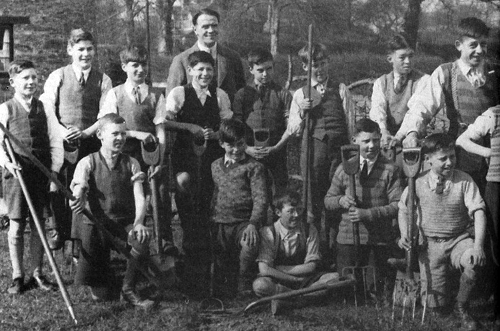
One of a series of photographs taken at St Mary’s school to commemorate the Silver Jubilee of George V and Queen Mary. The pupils at this school came from Ascott and Milton as well as Shipton and stayed on until 14 years old (unlike Milton where they moved on to Burford at 11), so gardening was part of the boys’ curriculum. The garden was later grassed over as a play area and sports ground. Charlie Smith (third from right) of Ascott remembers pushing the wheelbarrow through the village to deliver the produce to the master, Mr Horne (standing behind the boys). Three of the boys in this photograph died on active service just a few years later.
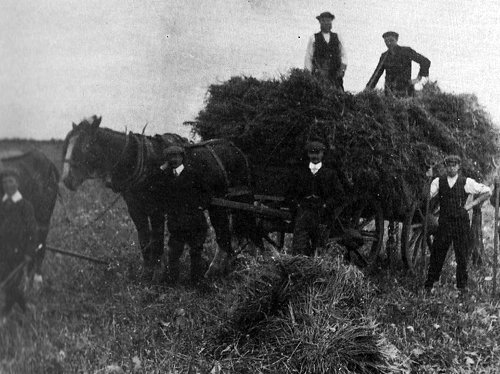
This photograph would appear to be posed because of the smart dress of two of the men and the boy in an Eton collar ‘leading foremost’. This job was one of the reasons given for absence in the nineteenth century Shipton school log books. The sheaves were carted from the fields on the Downs to Mr Maddox’s rickyard at Coldstone Farm. The man second from the right was Owen Turner who subsequently lost a leg in the First World War.
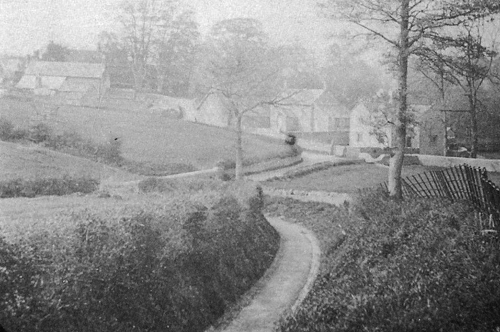
In the field to the west of this old sunken lane are the humps and bumps of house platforms, probably indicating part of medieval Shipton. The lane, worn down by wear and water over hundreds of years, is on a line of springs with a spout at the top end on Fiddlers Hill and Trot’s Spout nearly opposite the chapel. The lane is also called Water Lane and Chapel Lane.
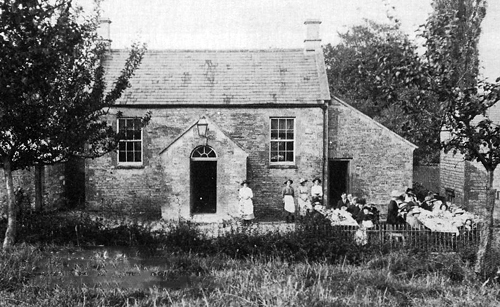
The chapel was erected in 1861 at a cost of £300. In The Brief History of the Baptist Chapel written in 1889, it is recorded that Mr J. F. Maddox not only paid half the cost but also superintended the school, Sunday and weekday services. On 21 September 1921, the Chapel celebrated its Diamond Jubilee with two services and tea on the lawn.
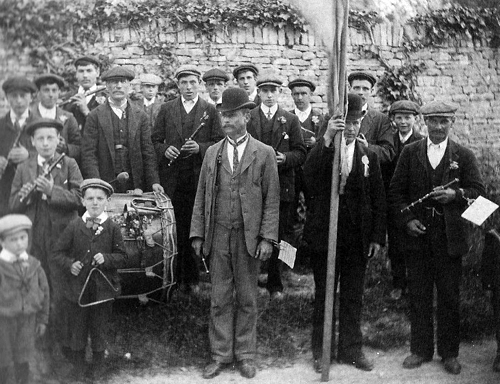
The band was founded by Reuben Rainbow in the early 1900s after he had returned from fighting in the second Boer War (1899-1902). He was wounded in the back, returned home in 1901 and eventually died of his wounds in 1911 aged 40. On the right with a fife is Bill Bradley, and his son Reg plays the triangle.
This is one of series of snapshots taken from the Society’s publications “The Wychwoods Albums”. These publications from the mid to late 1980s feature a variety of images of the Wychwoods, all of which deserve a place in our expanding online archive.
Select from:
WW1 Wychwoods Military | WW1 Wychwoods Memorabilia | Shipton WW1 Miscellany | St Michael’s Shipton Early 1900s | Early Prebendal Scenes| Shipton Court 1930s | Milton Scenes Early 1900s | Milton Social Activities | Farming Activities and People | Ascott Early 1900s | Leafield 1900s – 1930s | Fifield Residents Early 1900s | Idbury Early 1900s | Lyneham Miscellany| WW2 Evacuees | WW2 Wychwoods Home Front| WW2 Victory Celebrations|The First Wychwood Album

